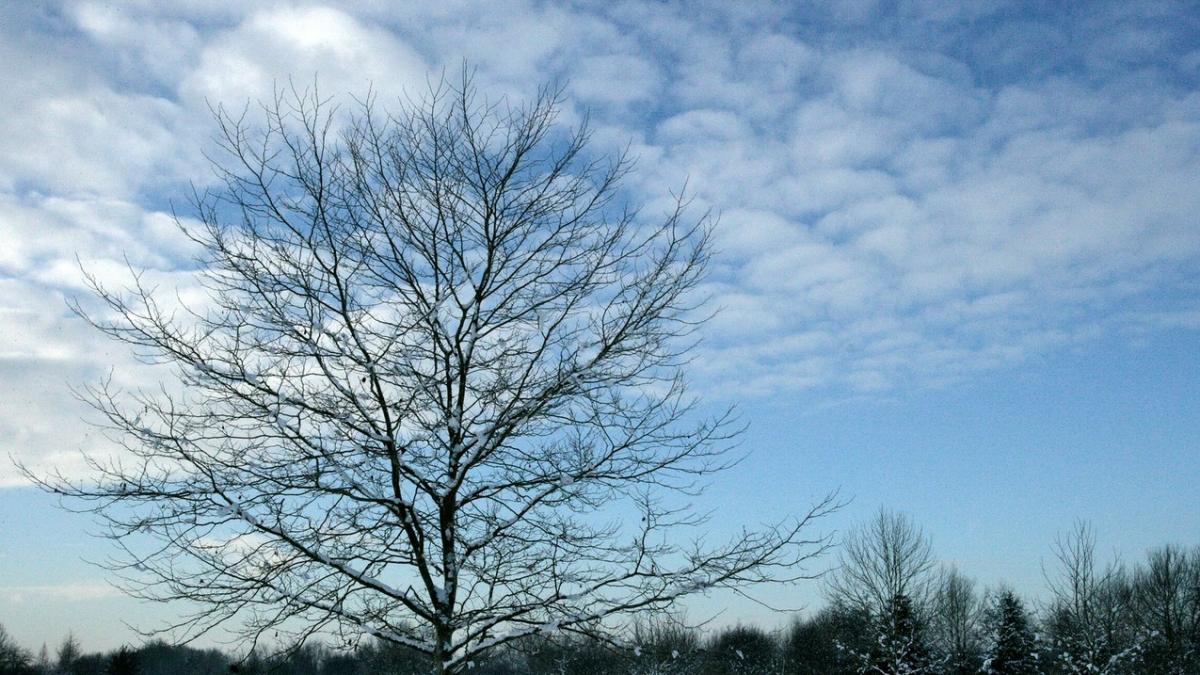
How to identify trees in winter
Once the autumn leaves have fallen, it can be a daunting task learning to identify trees in the winter. However, there are features other than leaves that can help differentiate tree species from one another. Assistant Forest Ranger Fiona shares her checklist for identifying trees in winter.
Clues for identifying trees in winter
Shape
The first feature I look for is the shape of the tree. When you think of a tree, the shape you are likely to imagine – a chunky trunk with a rounded cloud of green leaves – is that of an oak. However, trees come in many different shapes and sizes, which can give us major clues as to what they are. It is important to consider things like height, trunk size, stem shape, and twig shape and size.
Some trees are easily identifiable by their distinct height such as short, shrubby trees like the guelder rose. Or, some can be identified by their multiple bushy stems, like hazel, or have skinny sucker twigs poking through the ground all around them, like aspen.
Some trees not only change dramatically in size as they age, but also in shape. My favourite example of this is a willow tree; a young willow resembles a bush with branches reaching upwards, whilst mature willow branches hang down to give its characteristic weep.
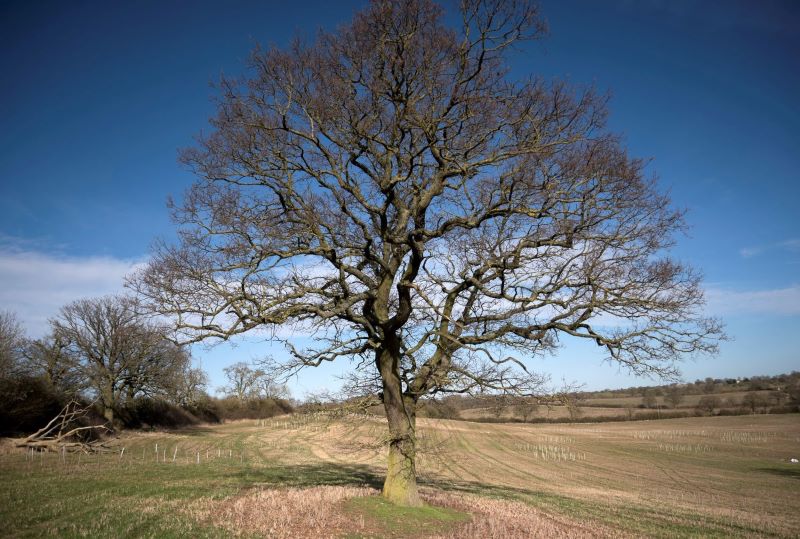
Situation
Some tree types can appear very similar in their shape, especially those in dense woodland where many species reach skyward to find light. So, another important aspect to consider is where the tree is situated. Is the tree you are identifying in a damp environment or a dry environment? If this is not obvious, it can be helpful to think about how the land has been used historically. For example, wet-loving species like alder and willow can often be found alongside old drainage ditches.
There are certain species of tree which thrive in cold hilly places, for example, dwarf birch. However, since the West Midlands is a lowland area we mainly find mixes of oak, ash and silver birch woodlands.
Berries
Berries are an instant giveaway on any shrub or tree during the winter months, often clinging to trees until early spring. Granted, these ones may resemble squishy Halloween eyeballs, but the fact that the tree has berries is, nevertheless, useful to know.
The main things to consider are the shape and the colour of the berries. The classic festive red berry culprits are rowan, hawthorn and guelder rose, whilst the suave inky blue berries are blackthorn, privet, and alder buckthorn.
Catkins
Catkins, resembling dangling earrings as they are silhouetted against bare branches, are just as useful as berries in identifying trees in winter. Catkins are a form of flower and are how these trees reproduce; female catkins are pollinated by the pollen produced in male catkins. Some trees, like hazel, are monoecious, meaning a single tree produces both male and female flower. Other trees, like white willow, are dioecious, meaning a single tree produces either male or female flowers.
Three of the native broadleaf trees in the UK possess catkins in winter: hazel, alder, and birch. The knowledge that the tree produces catkins, combined with the differences in tree shape, is usually enough information to make a confident stab at identification.
Watch out for sneaky hornbeam; this tree also has papery seeds which look like catkins but are not quite the real deal. Likewise, ash trees have pockets of dried out clusters of seeds – sometimes called “keys” as they look like a bunch of keys – which can be mistaken for catkins but are not.

Bark
In the absence of distinguishing features like berries and catkins, it can be necessary to take a closer look at the trees you are identifying to analyse their bark. The colour and texture of bark can vary wildly between different tree species. For example, the texture of the corky field maple tree is completely different to the smooth grey beech or white paper birch.
The cherry tree has particularly distinctive horizontal ridges on its bark. These ridges are called lenticels and are the airways of the tree. Lenticels allow the exchange of gases between the tree and the air outside; oxygen comes in, carbon dioxide and water vapour go out. Notice their length, how deep they are, which direction they are pointing in, and how many of them there are on the tree’s bark.
The deeper the ridges are on species like black poplar, oak, ash, and sweet chestnut, the older the tree. I came across a gorgeous mature black poplar tree near Alne Wood that had bark ridges like canyons – it must have been a few hundred years old!
Buds
The real cherry on the cake when it comes to tree identification skills is being able to recognise a tree from its buds. This can be particularly useful when identifying young saplings which have not yet grown other noticeable features like berries or bark texture. We use these skills daily in the forestry team as the trees we plant are between one and two years old.
When identifying trees by their buds it is helpful to look at the arrangement of the buds along the twigs. Buds can be arranged along the stem alternately, in pairs, or in around the stem in a whorl and there is wide variation in appearance. It is also important to look at the colour, size, and shape of the buds.
Wild service buds look like tiny green roses, ash buds are large and black, whilst beech buds are copper coloured, long and pointed. If you would like to find out more about bud identification, read Biodiversity Manager Sophie’s article.
Identifying winter trees in the Forest
Ultimately, tree identification in winter requires more attention to detail than in summer but, for me, this makes it more rewarding. Some of the differences between trees and shrubs sound kind of similar on paper i.e. lots of trees have small buds in oppositional pairs, but there are very subtle differences which the average walker may not spot. Some trees are mostly identifiable by the process of elimination.
Can you find these species on your winter walks in the Forest?
Aspen
Also known as quaking aspen, this is a beautiful tree with shimmering foliage. When the leaves have fallen during the autumn and winter months you can identify this species by:
- Its smooth grey bark
- Its diamond shaped lenticels on its trunk
- The skinny, sucker twigs that poke out of the ground all around its base
Wild privet

Privet is a group of shrubs and small trees of southern and eastern Asia, from the Himalayas extending into Australia. They may be evergreen or deciduous, and often have conspicuous heads of white flowers. In the winter, identify them by:
- The inky blue berries
Rowan

The lanky-looking rowan tree can grow up to 15 metres tall and live for up to 200 years! Once it has shed its creamy white flowers, look out for these features in winter:
- Scarlet red berries
- Smooth, silvery-grey bark
- Hairy, purple leaf buds that are arranged in turn on opposite sides of the stem (alternate formation)
- Terminal buds (on the ends of shoots) up to 8mm long
Silver birch
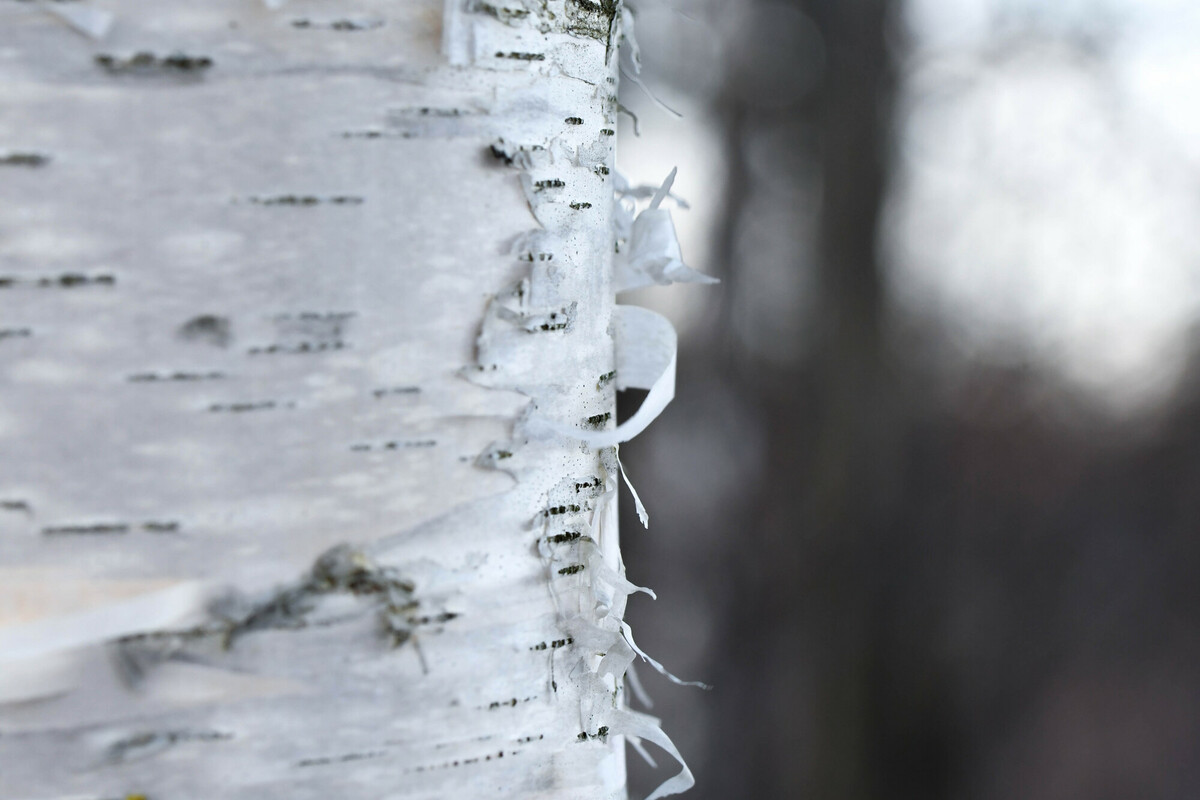
Silver birch is a striking, medium-sized deciduous tree. This species can reach up to 30 metres in height at maturity, forming a light canopy with elegant, drooping branches. In the winter identify them by:
- Bright white, papery bark that often peels off in paper-like sheets
- On older species, rough black diamond shapes appear on the surface that, over time, create fissured bark from the base of the tree upward
- Smooth twigs that have small, dark warts
- Long, yellow-brown, male catkins, and shorter, bright green female catkins
Spindle
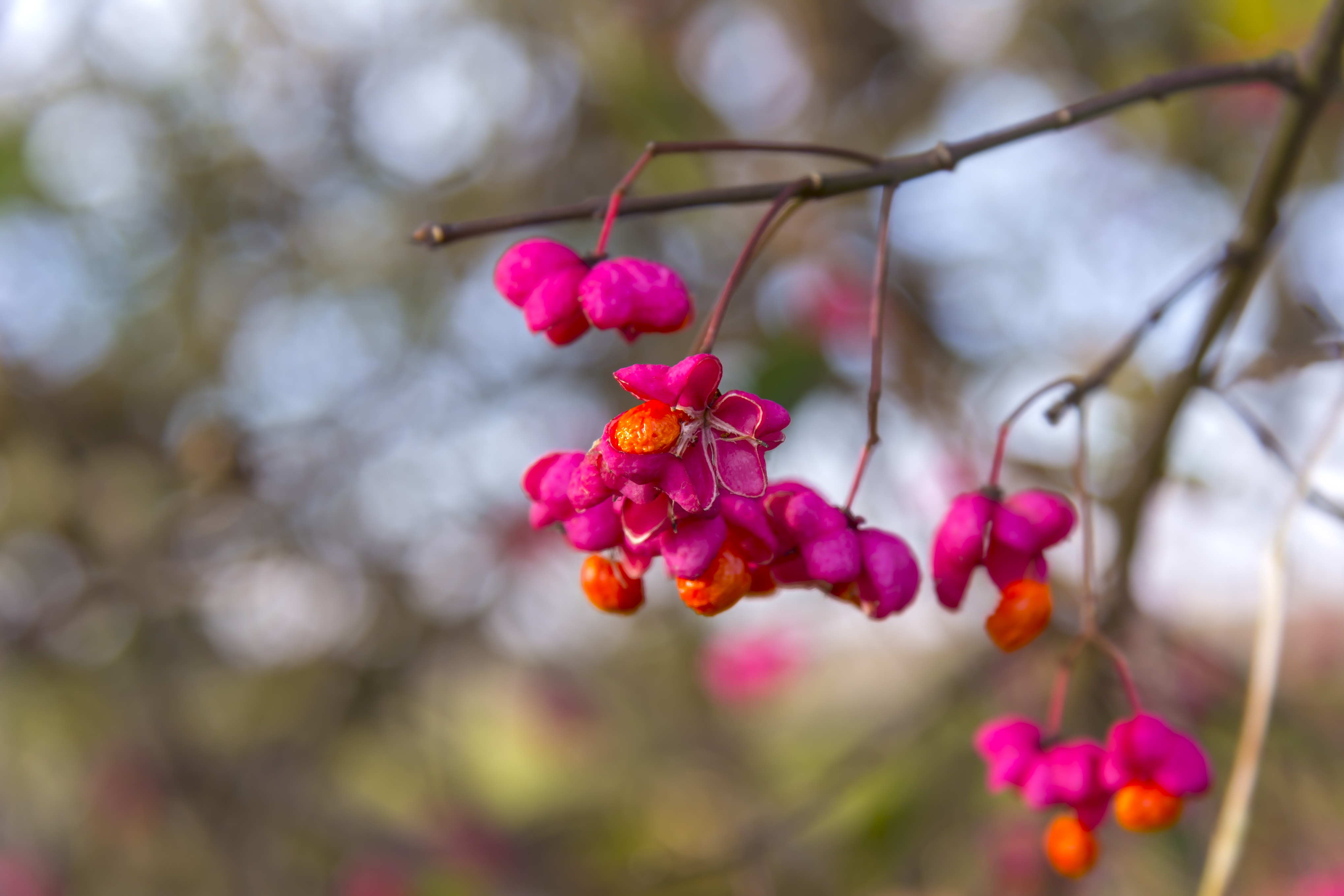
Spindle is a tall shrub that is often found along the edges of our woodland rides. Once their russet red leaves have fallen in the autumn, identify them by:
- The vibrant pink and orange, four-lobed berries
- Opposite buds that sit in pairs directly either side of their stems
Willow
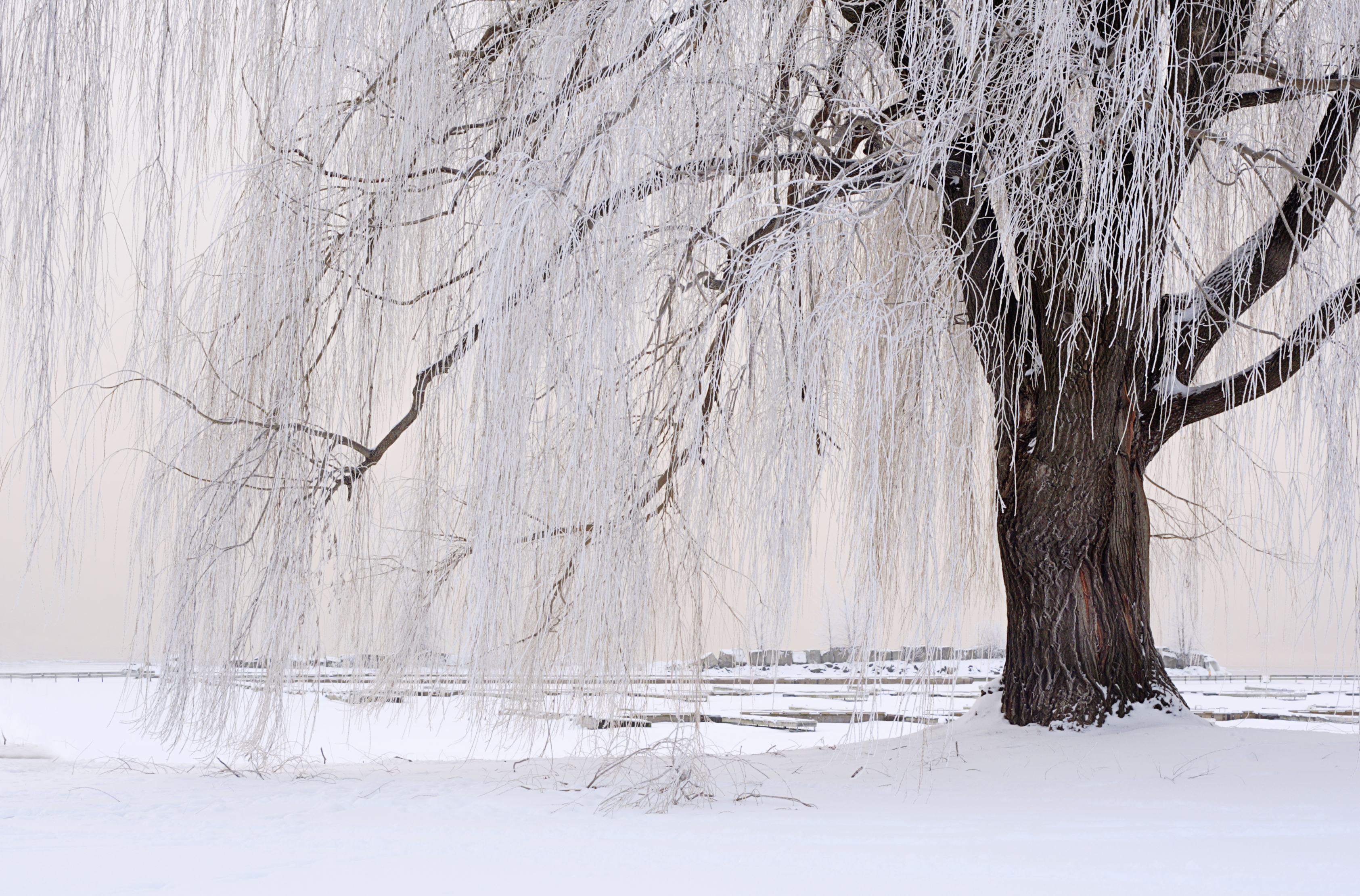
This distinctive tree can grow between 13-21 metres tall and is a wet-loving species so is often found in damp areas of the Forest. Here is how to identify willow in winter:
- Young willows are a bushy shape with branches reaching upwards
- Mature willow branches hang down to give its characteristic weep
We hope you've found these tips useful. For further guidance, check out our winter tree ID three part series with Elaine and Phil below!
Visit the Forest
Now take what you have learnt and put it into practise! Take a walk in the Forest this winter and see how many trees you can identify. Plan your visit here.



